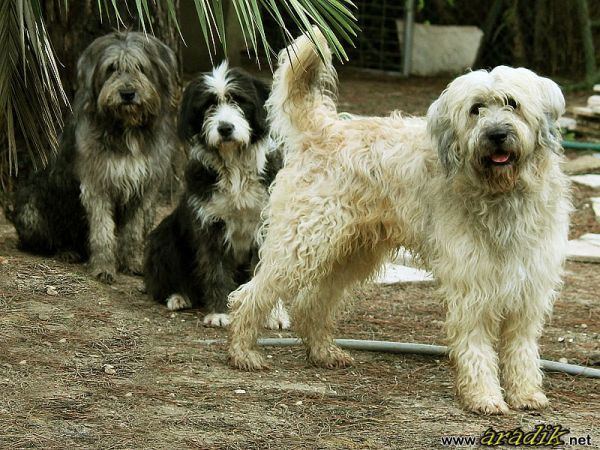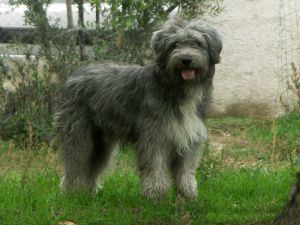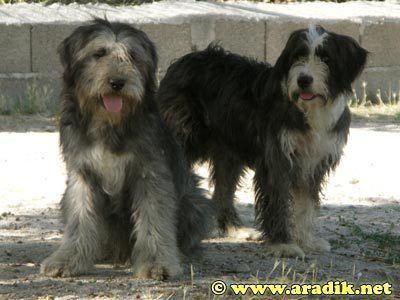Other names Terceira cattle dog Male 28-32kg Height 50–58 cm (20–23 in) Scientific name Canis lupus familiaris Higher classification Dog | Weight Male Female 21-30kg Coat Curly or semi-curly Origin Portugal Rank Breed | |
 | ||
Similar Cão de Gado Transmontano, Cão Fila de São Miguel, Cão da Serra de Aires, Cão de Castro Laboreiro, Estrela Mountain Dog | ||
The Barbado da Terceira is a medium-sized dog, with a volumous and robust look. The Barbado da Terceira is the most recently recognized Portuguese breed. The Portuguese Kennel Club (CPC) recognized it, on a provisional basis, on November 2004; it is not yet recognized by The Fédération Cynologique Internationale (FCI). It is a population native to the Azores Islands, in particular the Terceira Island.
Contents
- Faceco 2013 dog show portugese breeds barbado da terceira
- History and origins
- Morphology
- Work
- References

Faceco 2013 dog show portugese breeds barbado da terceira
History and origins

Two hypotheses have been put forward regarding the breed’s origin (1). One says it come from hunting dogs brought by settlers from all over Europe, due to the amount of wild cattle in the Azores, and it mentions the morphological similarity between several types of Griffons, Barbets and other large game hunting dogs with wire-hair and the Barbado. However, apart from the rarity of these dogs outside their national borders, this type of dogs is actually morphologically very different from the Barbado, it is used for hunting instead of herding and in very different conditions than those that exist in the Terceira. The second hypothesis is that the Barbado comes from medium-sized long haired herding and/or cattle dogs, which exist pretty much all over Europe. Given the similarities in appearance and work among these populations, this is probably the most realistic possibility. Quite likely, the breed came from a similar stock of dogs that gave rise to the Azores Cattle Dog, given the similar history of settlement of the Azores islands by the Portuguese, the Spanish, the French, the Belgians, the Flemish, the English, the Dutch, etc.
Morphology

The Barbado da Terceira is a medium-sized dog, with a voluminous and robust look. The heights and weights are 52 to 58 cm and 25 to 30 kg for males, 48 to 54 cm and 21 to 26 kg for females. Height has a tolerance range between 48 and 50 cm. The head is strong, with parallel axes. The muzzle is relatively short and wide, with abundant beards which name the breed. The nose is wide and cube-shaped, framing the face with a characteristic look. Their eyes are very expressive, showing intelligence and naughtiness; their color varies between honey and dark brown, but they should not be totally or partially blue. When not cropped, the ears are medium-sized, hanging and set high. The neck is short and well muscled. The body, bulky and with a deep chest, is just slightly longer than the height at the withers. The tail has a medium to low setting; it is usually long reaching at least the hock, but bobtails or cropped are accepted. The limbs are well muscled and broad boned; the posteriors are well angulated showing a good impulsion.
Work

Despite its joyful look, mostly due to its coat, the Barbado da Terceira is a strong willed and assertive dog. It needs an owner that knows how to handle dogs and implement the rules of healthy companionship, preferably someone with previous experience with dogs. Its “teddy bear” looks should not be an excuse to give in to its whims, as that may potentially lead to problematic situations – it is a sturdy strong animal.
